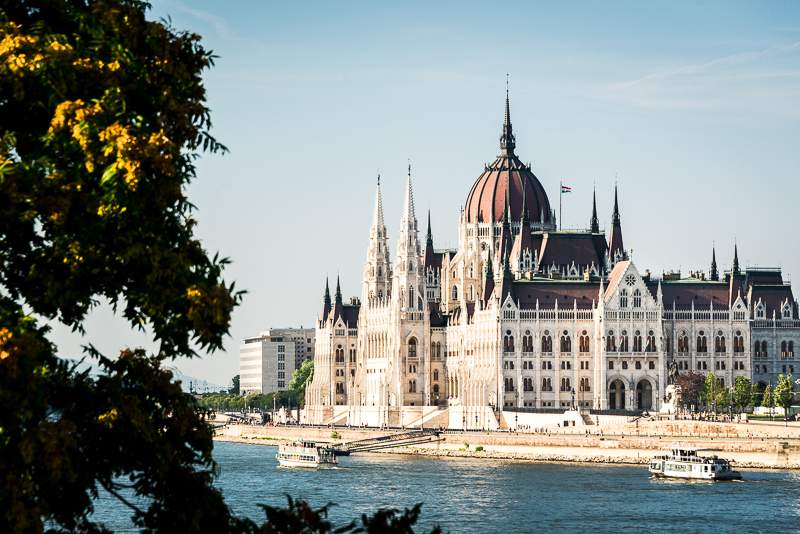The top districts of Budapest, according to Lonely Planet
Lonely Planet writes that Budapest is very similar to Paris in the diverse image of the districts. Luckily, there are no harsh contrasts between the districts, as there is a slow transition from one into the other. The blog collected some of the most characteristic and unique districts of Budapest, such as the Castle Hill or those laying on the Danube bank.
District I: Castle Hill
The Castle Hill is quite rich in history, as there are still remnants of days gone by, mostly reminiscent of the Ottoman occupation and the Habsburg ruling. The palaces, the cobbled streets are just a few treasures of medieval times, just like the Hospital in the Rock. This subterranean hospital was last used during the second World War and the 1956 Hungarian Revolution.
Another destination for you is the Buda Castle, where you can admire both the castle and its museum, or the Hungarian National Gallery. After this, we recommend visiting the Fisherman’s Bastion, from where the view of Pest is spectacular.
The National Gallery inside Buda CastleIf you’re still hungry for history, then visit the synagogue which was built in the 14th century or the grave of the last Pasha of Buda.
If you get hungry in the meantime, you can have a delicious meal at Deryné restaurant, at Krisztina tér, or at Baltazár Grill & Wine Bar. Looking for dessert? You will find the cake of your lifetime at Ruszwurm Confectionery, which is the oldest in the city.
After a long day of historical exploration, you can dip in the waters of the Rudas Bath, which was built by the Ottomans.
District V: Belváros & Lipótváros
Let’s start with history again: as Pest and Buda used to be separate cities, Pest had a city wall, the ruins of which can still be seen in District V. However, the most popular sights here are the Parliament and St Stephen’s Basilica, the Shoes on the Danube memorial, and of course, the melancholic, yet beautiful bullet holes that are reminders of the horror the city had to suffer during the wars and the Revolution.

St. Stephen’s Basilica
You can get a glimpse into Hungarian architecture if you go to Hold utca, where you’ll find the art nouveau Postal Savings Bank. Hungarian design is also something that you should check out if you’re in the city, the best way to do this is to head to MONO Art & Design and Paloma, which you’ll find at Kossúth Lajos utca.
Of course, we have not forgotten about your tummy either. Szimply Food and Kontakt, Costes Downtown, Onyx, the Gastronomic Quarter at Kempinski Hotel Corvinus, or Impostor bar are just a couple of the many places where you can grab a bite or sip on a cocktail.
District VII: Erzsébetváros & the Jewish Quarter
District VII is characteristic for the way fashion, history and nightlife learned to live and work together. This district is a perfect blend of past and present, with values of both preserved and emphasized.
It is no wonder that part of this district is considered the Jewish Quarter, since the Great Synagogue is found here, to be precise on Dohány street. This isn’t the only Jewish relic in the district: on Rumbach Sebestyén street, you’ll find another neo-Moorish synagogue. If you’re strolling on Király street, do not forget to check out the ghetto wall memorial under number 15.

The Dohány street Synagogue
Photo by Guavin Pictures
Moving on to fashion, Printa is worth mentioning, where you’ll find exquisite silkscreen prints and upcycled fashion items. If you’re looking for Hungarian-designed clothes, shoes and other accessories, Lonely Planet recommends The Velvet Chemistry.
This quarter is the home of some of the most trendy restaurants, cafés and ruin pubs. You can grab lunch at Konyha, Stika, Bors Gasztro Bár, Mazel Tov. Coffee? Head to Gozsdú Udvar. Drinks and ruin bars? Szimpla Kert (the first ruin bar in Budapest, where the furniture is mismatched, yet this design works perfectly well), Fogas, or Ellátó Kert.
District VIII: Józsefváros
District VIII was mainly avoided by tourists up until now, but there are still some who would rather not explore the outer corners of it.
As several other districts that were mentioned previously, District VIII has great historical significance too. The 1956 Revolution started here, more exactly at Bródy Sándor utca, where the former Hungarian Radio Headquarters are. The first shots were fired there.
Regarding architecture, the Palace District, for which the VIII is famous for, has to be mentioned. This section of the district is named after the palatial apartments that used to be the homes of the aristocratic elite during the 19th century. Another stop that you should make in the Palace District is the beautiful building of the Ervin Szabó Library, the most significant library in Hungary. We have another suggestion for you if you’re interested in the 8th district’s architecture, namely the Mikszáth Kálmán tér, where the Italian influence is very striking.

The Hungarian National Museum
If you’re thirsty for culture, you should definitely head over to the Hungarian National Museum, where you’ll get a glimpse into Hungarian art and history. The museum was built in neoclassical style, just to emphasize the diversity of the styles found in the capital city. Nearby you’ll find the Uránia Cinema, built in Venetian-Moorish style, where you can watch an arthouse film, or just sip on a cuppa in the cinema café. We also recommend checking out FlatLab, where you can meet the younger creative generation. This atelier and showroom in one is run by local designers.
Refuel at Lumen, a local roastery, and café, or at Fekete, a new wave café. Try the special bagel sandwiches at Budapest Bagel, or pop by Café Csiga.
We have some tips on how to spend your evenings too. Check out the alternative cultural centres of Müszi or Aurora. Want to try a local party? Head to Corvin Club, which is on the rooftop of Corvin Plaza.
District IX: Ferencváros
Although this district wasn’t that popular with tourists either (just like District VIII), thanks to the flourishing culture and the craft beer in the district, it’s gaining attention.
Speaking of culture, make sure to visit the National Theatre, which is one of the most beautiful buildings in the city with the sculptures around it reminiscent of ancient Rome. Behind the theatre, you will find the Palace of Arts and the Ludwig Museum of Contemporary Art sharing two ends of a huge building.

The National Theatre, the Ludwig Museum and the Palace of Arts
If you head back along the Danube bank in the direction of the Parliament, you will soon see the Bálna, which is a huge glass complex shaped as a whale, hosting cafés, restaurants, shops and galleries. Not far from it, there is the Central Market Hall, where the Hungarikums are represented in the form of spices, food and souvenirs.
When you get hungry, grab lunch at the French-Hungarian Petrus, or at the Food Truck Udvar.
We’ve started the description of this district by mentioning the craft beer scene here. Well, the alternative name of District IX is the ‘Craft Beer District’, as a lot of bars serve local beer. If you want to learn more about Hungarian craft beers, then head to Élesztő, where over 25 beers await you.
If you’re near the National Theatre, you can even visit the Zwack Unicum Factory, where Hungary’s famous bitter liqueur is made.
featured image: Guavin Pictures
Source: lonelyplanet.com
please make a donation here
Hot news
Hungarian opposition: We know how to replace Orbán’s regime
Have the wages of manual workers skyrocketed in Hungary?
Orbán cabinet: ‘Witch hunt’ against Hungarian companies ongoing in Ukraine
What happened today in Hungary? – 22 April, 2024
New Hungarian president perfectly repeats the foreign policy guidelines of the Orbán cabinet
PM Orbán’s political director: EU now super state where independent viewpoints ‘are quashed’





